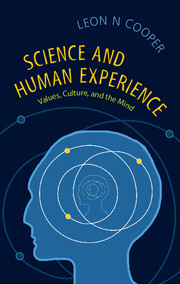Book contents
- Frontmatter
- Dedication
- Contents
- Preface
- Acknowledgement
- Part One Science and Society
- Part Two Thought and Consciousness
- 13 Source and Limits of Human Intellect
- 14 Neural Networks
- 15 Thought and Mental Experience: The Turing Test
- 16 Mind as Machine: Will We Rubbish Human Experience?
- 17 Memories and Memory: A Physicist's Approach to the Brain
- 18 On the Problem of Consciousness
- Part Three On the Nature and Limits of Science
- References
13 - Source and Limits of Human Intellect
from Part Two - Thought and Consciousness
Published online by Cambridge University Press: 05 November 2014
- Frontmatter
- Dedication
- Contents
- Preface
- Acknowledgement
- Part One Science and Society
- Part Two Thought and Consciousness
- 13 Source and Limits of Human Intellect
- 14 Neural Networks
- 15 Thought and Mental Experience: The Turing Test
- 16 Mind as Machine: Will We Rubbish Human Experience?
- 17 Memories and Memory: A Physicist's Approach to the Brain
- 18 On the Problem of Consciousness
- Part Three On the Nature and Limits of Science
- References
Summary
The brain is believed to be the physical source of thought. But can the human brain understand itself? Are there limits to human intellect? If so, what are they and how will we know when we have reached them?
This essay is based on an article originally published in the journal Daedalus, 109(2), in the spring of 1980.
1
Not so long ago the eye was thought to be a somewhat miraculous organ functioning in a more prosaic body. We smile indulgently at the naïveté of our intellectual grandparents. Today, though we regard our eyes with great respect, few attribute magical properties to them. The same might be said for kidneys, the heart, and other organs. We appreciate their importance, we may understand how they work, we may not be able to build them as efficiently as nature does, yet we hardly regard them as mysterious.
The same calm does not seem to prevail when we consider the brain. Although the brain could be regarded in the same way we regard the heart, the eye, or a muscle, the functions associated with the physical entity “brain” such as thought, consciousness, and awareness of self – those most precious human characteristics – are not as easily attributed to the earthy material in which they may or may not originate, as the function of pumping might be attributed to the heart.
- Type
- Chapter
- Information
- Science and Human ExperienceValues, Culture, and the Mind, pp. 87 - 108Publisher: Cambridge University PressPrint publication year: 2014



